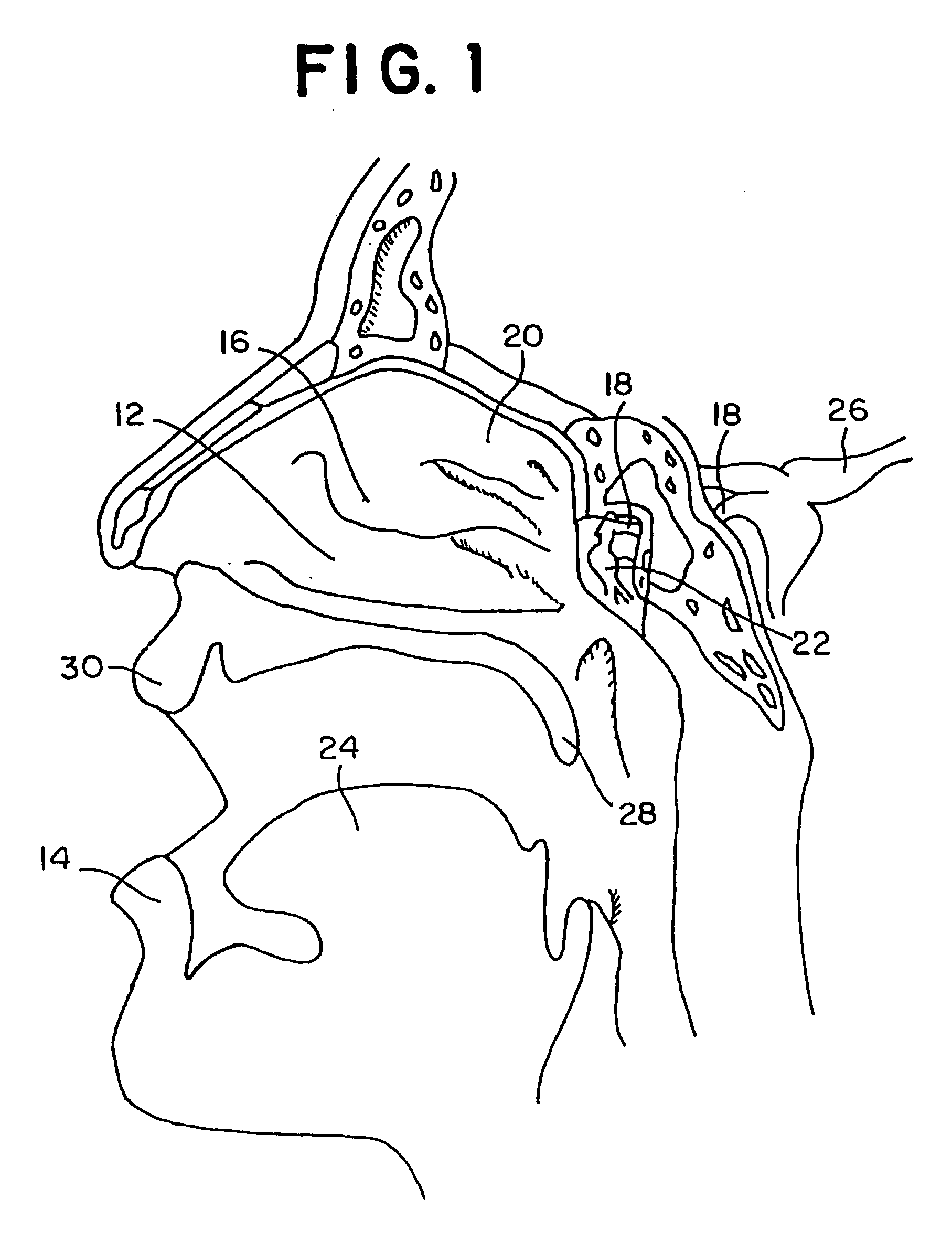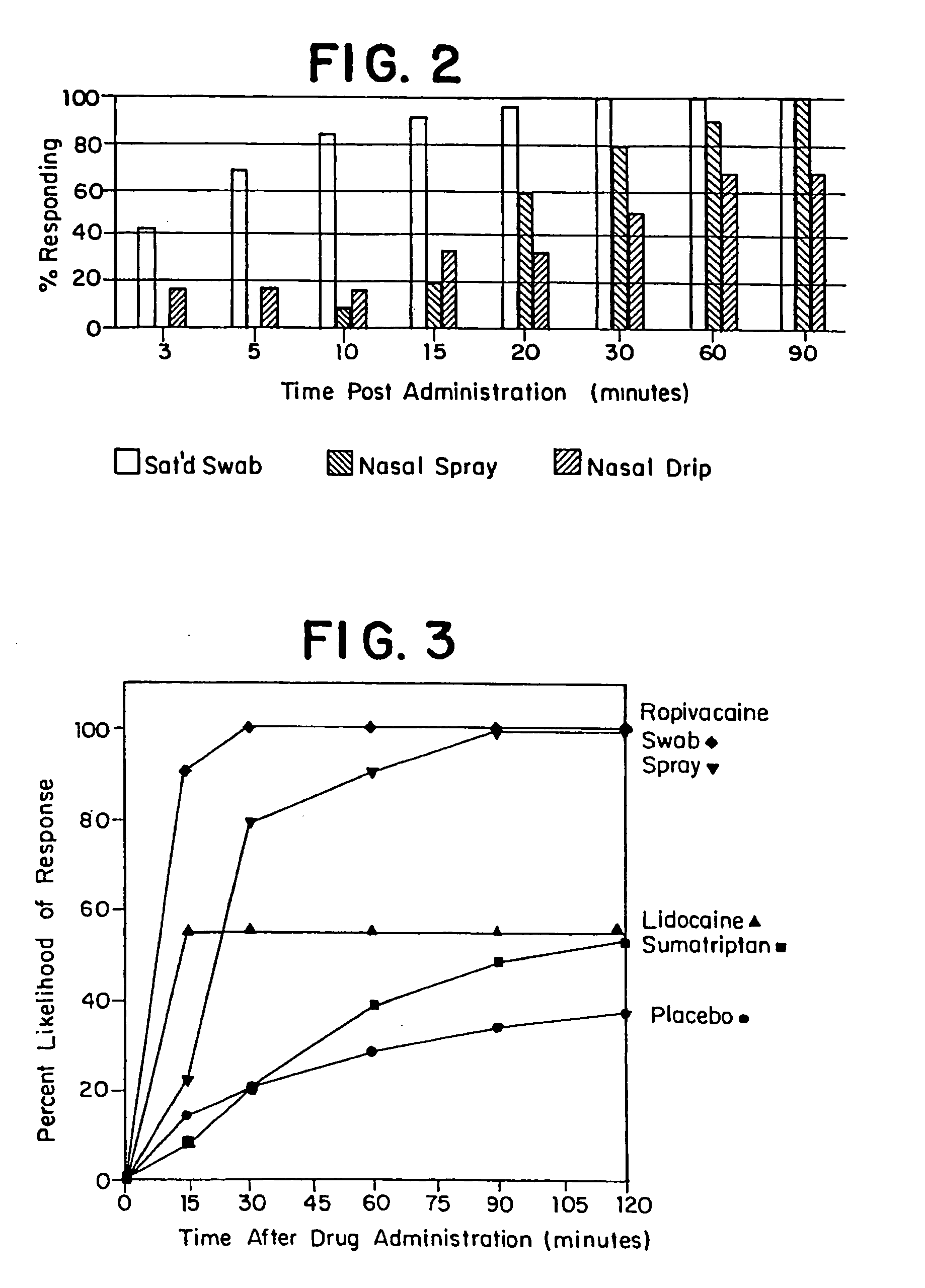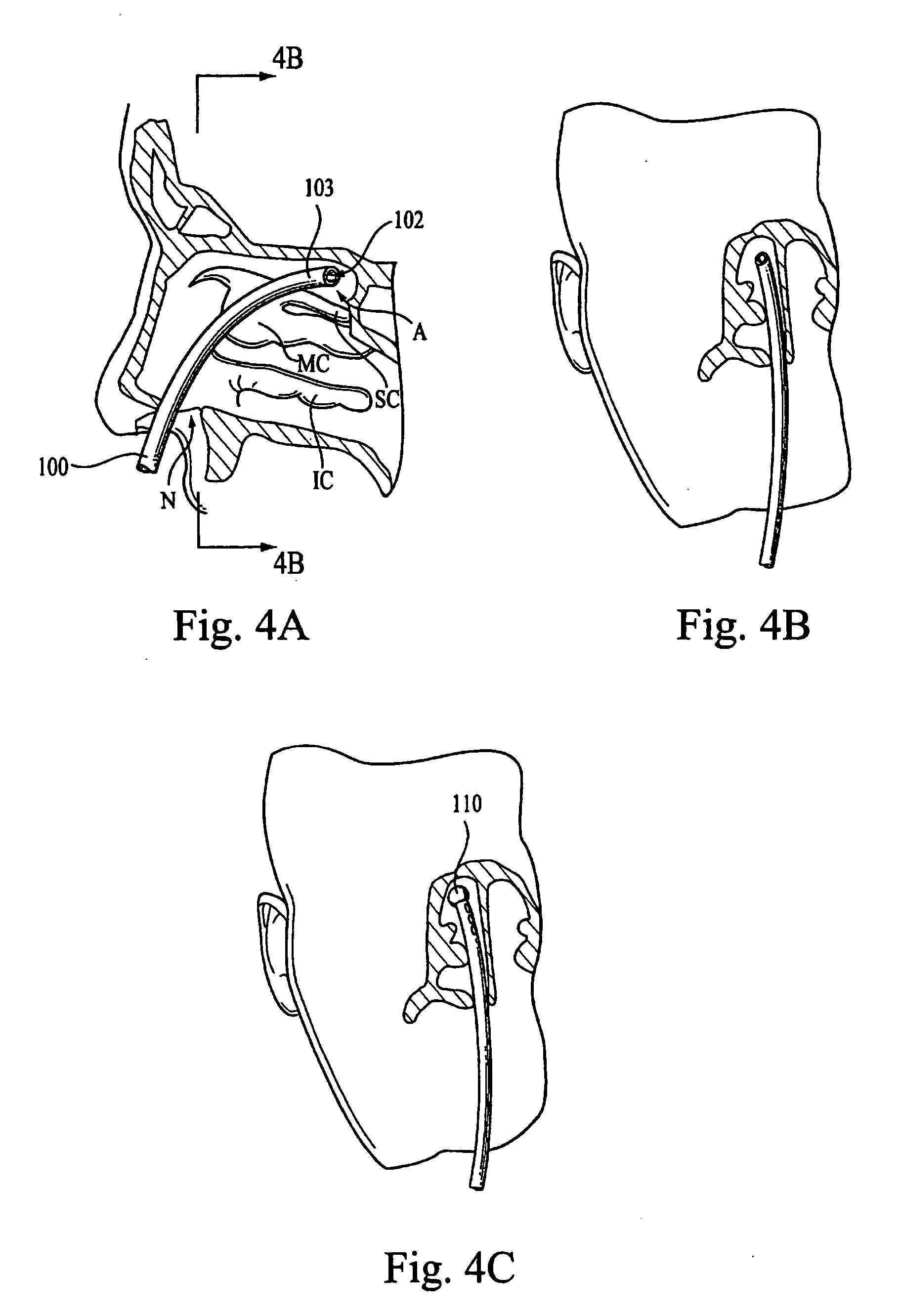Directed intranasal administration of pharmaceutical agents
- Summary
- Abstract
- Description
- Claims
- Application Information
AI Technical Summary
Benefits of technology
Problems solved by technology
Method used
Image
Examples
example 1
[0240] Dorsonasal Administration of Ropivacaine for Inhibition of Acute Migraine Episodes
[0241] The purpose of the experiments described in this Example was to determine the efficacy of dorsonasal administration of ropivacaine for inhibition of acute migraine episodes. Ropivacaine was dorsonasally administered to individual patients experiencing head pain, other symptoms, or both, believed to be associated with an acute migraine episode. Patients assessed head pain prior to and after ropivacaine administration.
[0242] Dorsonasally administered ropivacaine rapidly inhibited of migraine in 92% of the ambulatory patients, as evidenced by an average 90% reduction in perceived pain within one hour, usually within 15 minutes or less. Symptoms of nausea and photophobia associated with acute migraine episodes in patients were similarly inhibited. Rebound of migraine occurred in only 5.4% of patients within twenty-four hours of treatment. These results demonstrate that dorsonasal administra...
example 2
[0272] Dorsonasal Administration of Bupivacaine for Inhibition of Acute Migraine Episodes
[0273] The purpose of the experiments described in this Example was to determine the efficacy of dorsonasal administration of bupivacaine for inhibition of acute migraine episodes. Bupivacaine was dorsonasally administered to individual patients experiencing head pain, other symptoms, or both, believed to be associated with an acute migraine episode. Patients assessed head pain prior to and after bupivacaine administration.
[0274] Dorsonasally administered bupivacaine provided rapid arrest of migraine in all seven patients to whom it was administered within 10 minutes or less. Symptoms such as nausea, visual changes, and photophobia associated with acute migraine episodes in the patients were similarly reduced. Six of the seven patients treated using bupivacaine experienced no rebound of their migraine within twenty-four hours of treatment. The other patient experienced a recurrence of head pai...
example 3
[0277] Inhibiting a Recurring Cerebral Neurovascular Disorder by Dorsonasally Administering a Long-acting Local Anesthetic Decreases the Frequency and Severity of Subsequent Episodes
[0278] The following studies relate to the methods of decreasing the frequency and severity of CNvD episodes described herein, and involved three patients.
[0279] A 25-year-old woman, herein designated “patient 3-1” was afflicted with recurring severe migraine, wherein acute migraine episodes were associated with nausea and visual changes. Patient 3-1 generally rated the severity of head pain associated with acute migraine episodes in the range from five to eight using the pain scale described herein. Patient 3-1 experienced, on average, about one acute migraine episode per week prior to beginning dorsonasal ropivacaine therapy. In addition, patient 3-1 also usually experienced about one severe acute migraine episode per month, associated with menses, wherein the severity of head pain was from eight to ...
PUM
 Login to View More
Login to View More Abstract
Description
Claims
Application Information
 Login to View More
Login to View More - R&D
- Intellectual Property
- Life Sciences
- Materials
- Tech Scout
- Unparalleled Data Quality
- Higher Quality Content
- 60% Fewer Hallucinations
Browse by: Latest US Patents, China's latest patents, Technical Efficacy Thesaurus, Application Domain, Technology Topic, Popular Technical Reports.
© 2025 PatSnap. All rights reserved.Legal|Privacy policy|Modern Slavery Act Transparency Statement|Sitemap|About US| Contact US: help@patsnap.com



